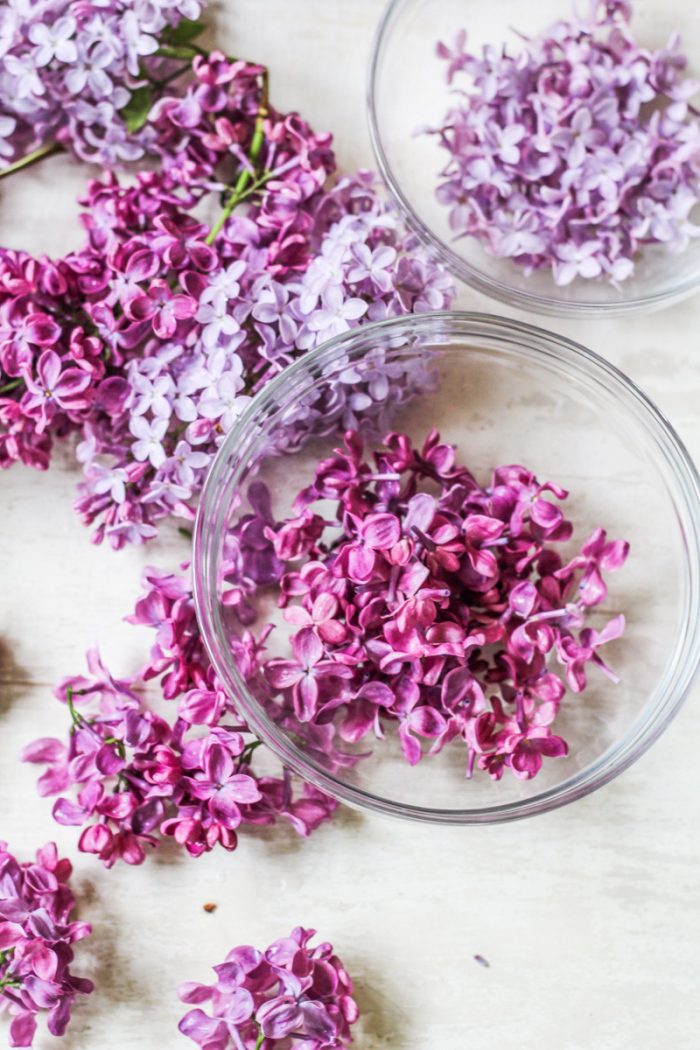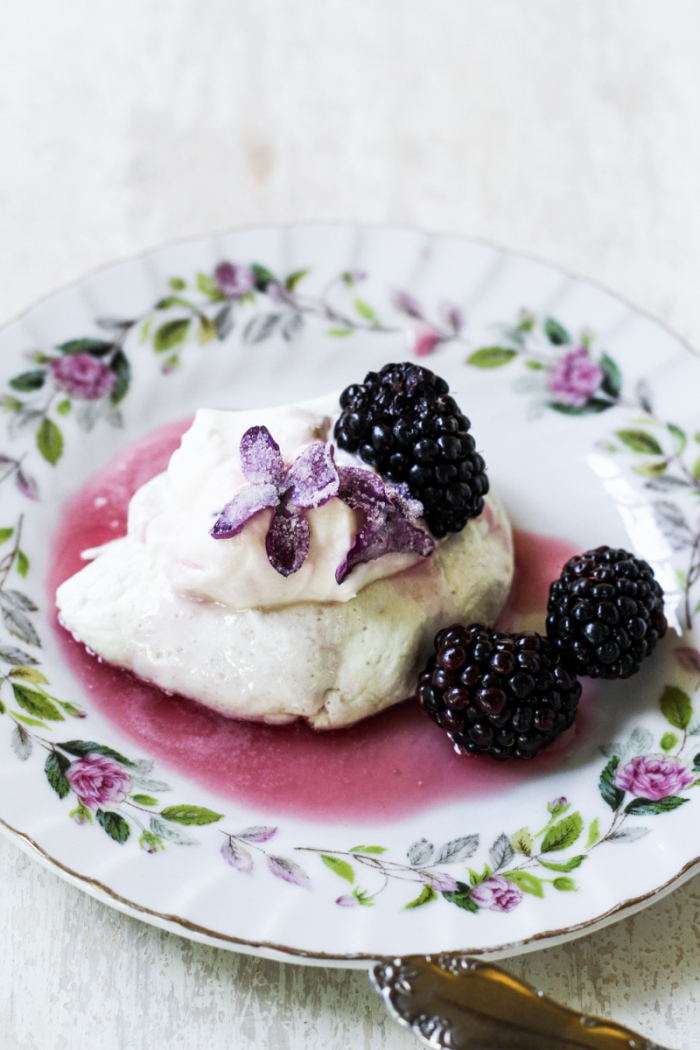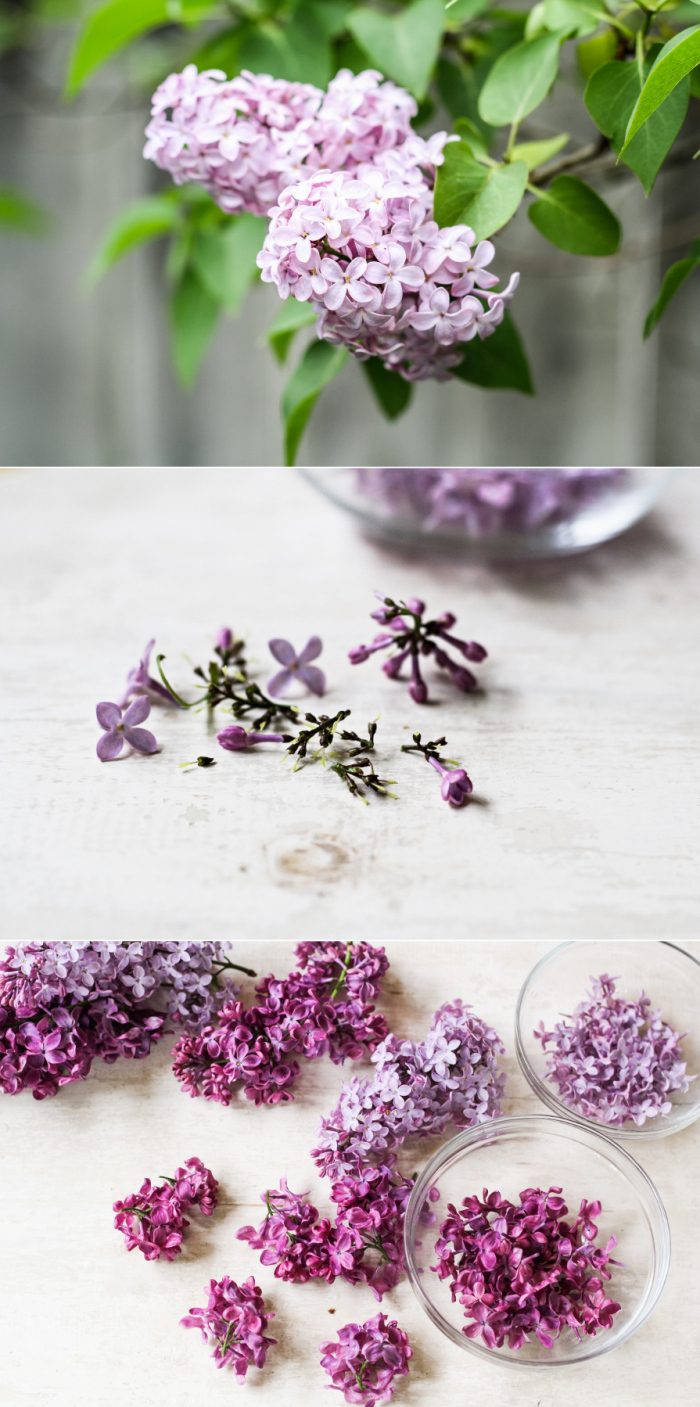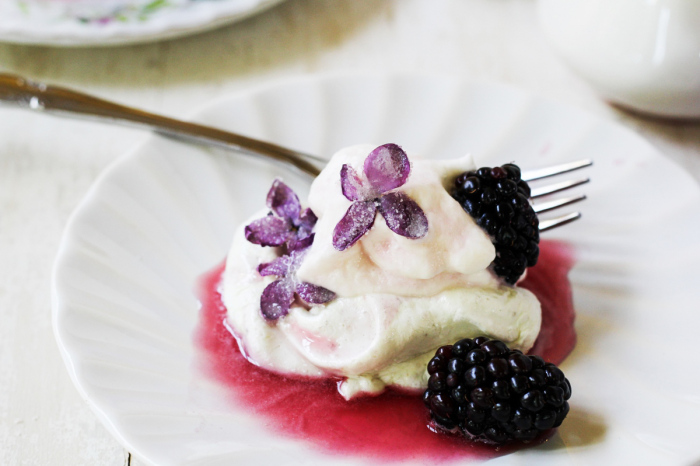The fact that you can cook with lilacs was totally irresistible to me. Lilacs are one of my favorite flowers, and their heady scent carries many fond memories of warm spring days. Since lilacs pass quickly, never staying open more than a week, being able to preserve their scent in sugars and sauces felt like a wonderful trick, and I sort of went all out with the lilac recipes to take advantage of this. A few hours of cleaning lilac blossoms later, I have lilac pavlovas, lilac-blackberry syrup, lilac sugar, candied lilacs, and dried lilacs, all ready to be used now or later in sweetly scented treats. which are then topped with whipped cream, fresh blackberries, candied lilacs, and the lilac-blackberry syrup. All together the dessert was elegant, light, and uniquely flavored – a perfect and effervescent ending to a spring dinner.
Lilac and Blackberry Pavlovas
Serves 4-6.
Note: How to select and clean lilacs – first, only use flowers that have been grown organically. Do not use flowers that have been sprayed or that are growing by the side of the road, as they may have absorbed toxins. Cut lilac bunches from a bush to be used. Wash each bunch, being careful that any bugs are rinsed off. Further separate the flowers into smaller clusters on a thin stem. Gently pull each flower from it’s sepal (the green part at the base of the flower). The lilac blossom should separate from the light yellow-green interior (see pictures above). One cup of lilacs will contain 40 to 60 individual blossoms. A single lilac bunch will likely yield between 1/2 and 1 cup of blossoms.
For the lilac-blackberry syrup:
- 2 c. water
- 3 c. lilac blossoms (see headnote)
- 1/2 c. sugar
- 8-10 fresh blackberries
- Bring water to a boil. Place blossoms in a bowl and pour boiling water over them. Let stand for at least 2 hours and up to 24 hours.
- Add the flowers, flower water, sugar, and blackberries to a medium saucepan. Bring to a boil over medium-high heat. Boil for 6-8 minutes, stirring and squishing blackberries with the back of a wooden spoon. Remove from heat and strain into a glass container. Discard the solids.
For the lilac pavlovas:
- 1/2 c. lilac blossoms (see headnote)
- 1 c. sugar
- 2 TBS cornstarch
- 4 egg whites
- 1/4 tsp cream of tartar
- 1/2 tsp lemon juice
- Preheat the oven to 210°F. Line a large baking sheet with parchment paper and set aside.
- Place the lilac blossoms and the sugar in a food processor and blend until pulverized. Mix 2 TBS of the lilac sugar with the cornstarch in a small bowl. Set the rest aside.
- In a clean bowl, beat the egg whites on high until foamy. Sprinkle with the cream of tartar, then beat continually on high, gradually adding 1 cup of the remaining lilac sugar as you go. (You may have leftover lilac sugar – store it in a glass jar with a lid). Beat until the egg whites are stiff, shiny, and hold firm peaks.
- Fold cornstarch mixture and lemon juice into the whipped egg whites. Use a large spoon to dollop the egg whites into 3-inch rounds on the lined baking sheet, then use the back of the spoon to scoop out a small indentation in each pavlova. Bake for 1 hour, or until they feel dry to the touch. Turn off the oven and leave the pavlovas in there for another hour with the door closed.
To serve:
- 12 small lilac pavlovas
- 2 c. of freshly whipped sweetened whipped cream
- 6-8 blackberries per person
- 1 c. lilac-blackberry syrup
- candied lilacs (optional)
- Place 2 pavlovas on each plate. Top each with a dollop of whipped cream and a few blackberries. Drizzle with lilac-blackberry syrup and top with candied lilacs.





Dining and Cooking